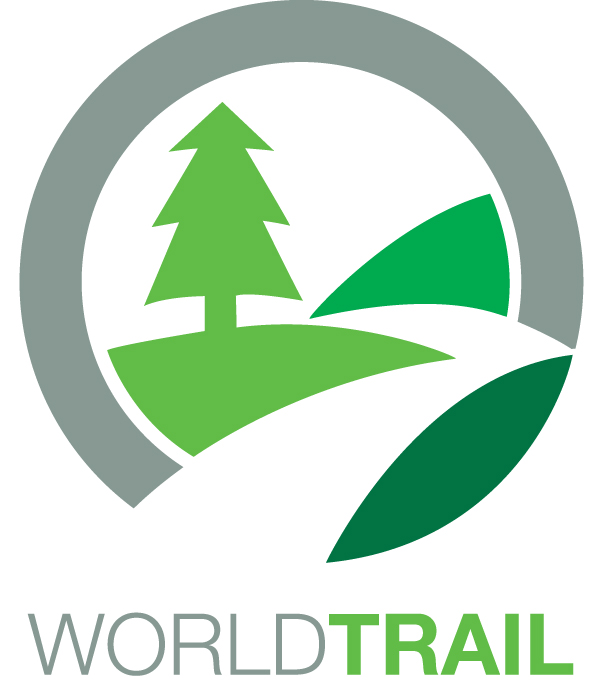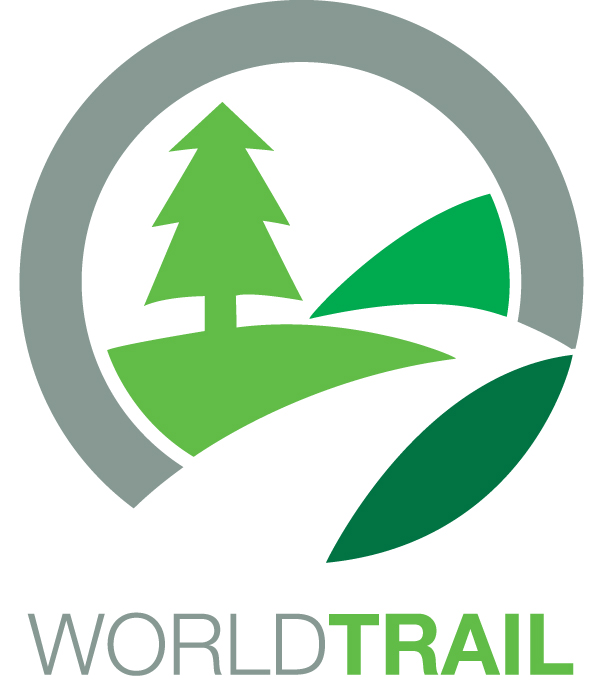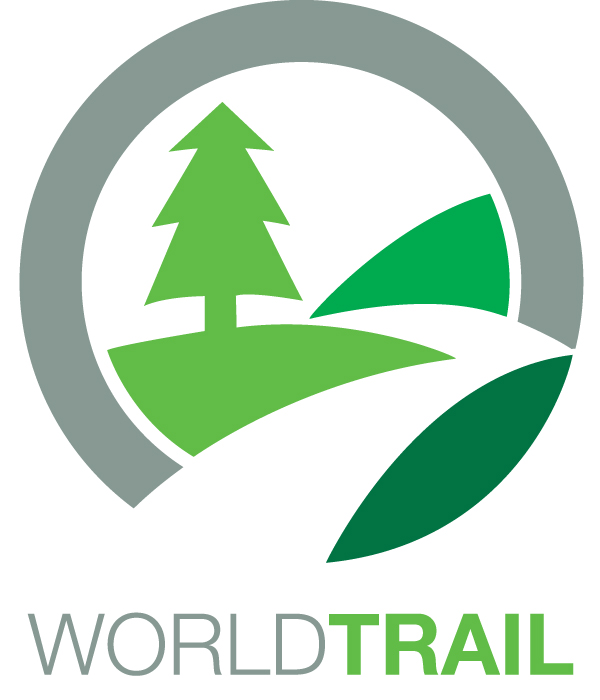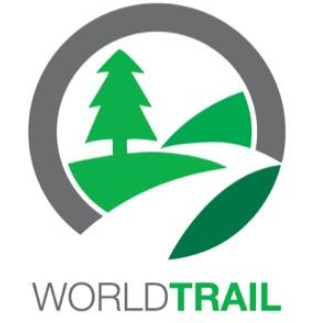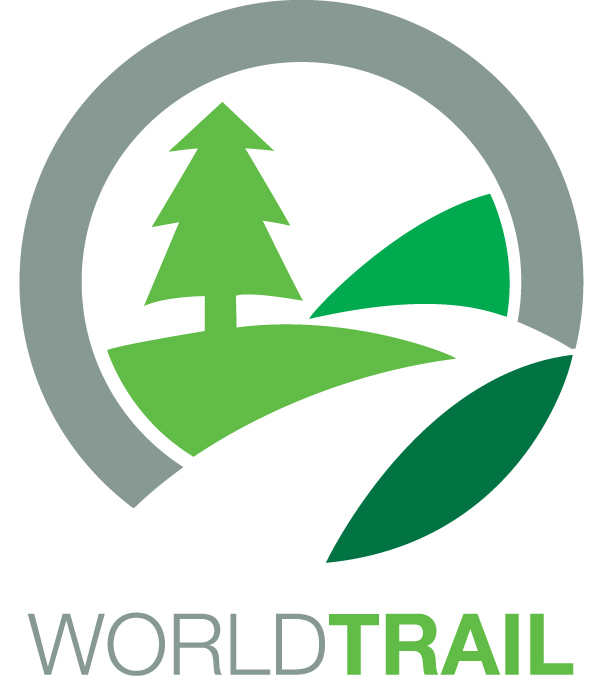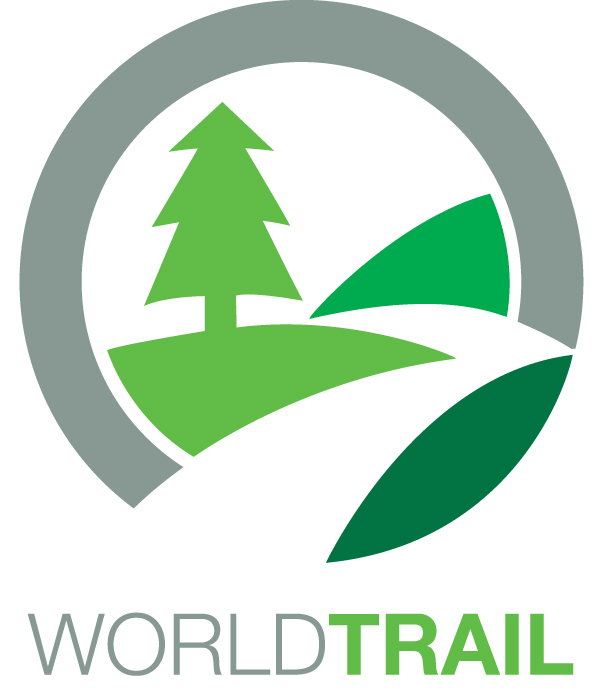Title Page
-
SWMS No
-
Conducted on
-
Prepared by
-
Location
Company Details
-
Business Name:
-
Business Address:
-
Business Contact:
-
Business #:
-
Phone No:
SWMS APPROVAL
-
SWMS APPROVED BY: (Employer/PCBU/Director/Owner)
-
Date:
-
Name and Signature of person responsible for ensuring compliance with SWMS:
-
Person/s Responsible for Reviewing the SWMS:
-
SWMS amendments must be approved by
Person
-
Name and Signature:
-
ALL PERSONS INVOLVED IN TASK MUST HAVE THIS SWMS COMMUNICATED TO THEM PRIOR TO WORK COMMENCING:
- Daily Tool Box Talks will be undertaken to identify, control and communicate additional site hazards.
- Work must cease immediately if incident or near miss occurs. SWMS must be amended in consultation with relevant persons.
- Amendments must be approved by nominated persons and communicated to all affected workers before work resumes.
- SWMS must be made available for inspection or review as required by WHS legislation.
- Record of SWMS must be kept as required by WHS legislation (until job is complete or for 2 years if involved in a notifiable incident). -
Select to acknowledge the above has been read and understood
Relevant Workers
Relevant workers must be consulted in the development, approval and communication of this SWMS.
-
Workers to be consulted:
Worker
-
Name and Signature:
-
Job Title:
Part 1: Principal Contractor Details
Principal Contractor details
-
The builder or the organisation you are working for.
-
Principal Contractor Company Name:
-
Project Name:
-
Job Address:
-
Project Manager Name and Signature:
-
Date SWMS provided to Principal Contractor:
High Risk Construction Work & PPE
SWMS Scope
-
This SWMS covers general hazards associated with the operation of mobile plant associated with earthworks. This SWMS covers: Skidsteer, Backhoe, Excavator, Dozer, Front end loader, Grader, Scraper, Tractor, and Track loader - Drott
-
Document #10533-2
High Risk Construction Work
-
This work activity involves the following "High Risk Construction Work" (select all that apply):
-
Confined Space
-
Mobile Plant
-
Demolition
-
Asbestos
-
Using explosives
-
Diving work
-
Artificial extremes of temperature
-
Tilt up or pre-cast concrete
-
Pressurised gas distribution mains or piping chemical, fuel or refrigerant lines energised electrical installations or services
-
Structures or buildings involving structural alterations or repairs that require temporary support to prevent collapse
-
Involves a risk of a person falling more than 2m, including work on telecommunications towers
-
Working at depths greater than 1.5 Metres, including tunnels or mines
-
Work in an area that may have a contaminated or flammable atmosphere
-
Work carried out adjacent to a road, railway or shipping lane, traffic corridor
-
In or near water or other liquid that involves risk of drowning
Risk Assessment Matrix & Controls
Personal Protective Equipment (PPE)
-
Ensure all PPE meets relevant Australian Standards. Inspect and replace PPE as needed.
-
Foot Protection
-
Hearing Protection
-
High Visibility
-
Head Protection
-
Eye Protection
-
Face Protection
-
Hand Protection
-
Breathing Protection
-
Protective Clothing
-
Fall Arrest
-
Sun Protection: Broad brimmed hat, UV rated clothing, SPF 30+ sunscreen, tinted safety glasses with adequate UV protection
-
Rings, watches, jewellery that may become entangled in machines must not be worn. Long and loose hair must be tied back.
JOB STEP 1. Planning & Preparation
Potential Hazard: Lack of consultation with potential outcomes for personal injury, property damage &/or environmental incident.
-
-
Risk-Rating (IR) before control measures have been put in place
-
CONTROL MEASURES TO REDUCE RISK
Liaise with Principal Contractor to establish the following on-site systems and procedures are in place and take note of:
· Health and Safety rules
· Induction for all workers – site specific and toolbox meetings
· Supervisory arrangements
· Communication arrangements
· All relevant workers are appraised for required competencies & for any pre-existing medical conditions if working in remote or isolated locations.
· PPE required
· Site plans – showing no go zones for pedestrians
· Traffic Management Plan
· Exclusion Zones
· Risk Assessments
· SWMS and JSA’s
· Injury reporting procedures
· Hazard reporting procedures. -
Risk-Rating (RR) after control measures have been put in place
Potential Hazard: Remote and/or isolated work - personal Injury from delay in emergency assistance to remote workers
-
-
Risk-Rating (IR) before control measures have been put in place
-
CONTROL MEASURES TO REDUCE RISK
A ‘Buddy’ system is utilised for high-risk tasks undertaken in remote locations or working in isolation.
A procedure is developed and in place for regular contact with people working remotely or in isolation, The procedure should identify:
· Travel itineraries, locations, scheduled contact persons and times
· Sufficient supplies of water, food, fuel & supplies needed
· An emergency response
· Appropriate Vehicles
· Safety equipment including first aid. -
Risk-Rating (RR) after control measures have been put in place
-
Person responsible to implement control measures:
JOB STEP 2. Training & Capabilities
Potential Hazard: Lack of training or the assessment of capability may lead to personal injury, property damage &/or environmental incident.
-
-
Risk-Rating before control measures have been implemented
-
CONTROL MEASURES TO REDUCE RISK
Ensure all persons entering site have a General Construction Induction Card (white card).
Operator has appropriate licences for operation of the machine.
Ensure all relevant workers have undertaken training and/or received instruction in the use of control measures.
Include:
· Reporting procedures for incidents
· Correct use of equipment including selecting, fitting, use, care of and maintenance
· Use of supervision where required (e.g. new starters or new equipment)
· Correct use of all equipment
· Ensure supervisors, foremen etc. are suitably experienced in the type work to be conducted
· All workers are trained in this SWMS. -
Risk-Rating (RR) after control measures have been put in place
-
Person responsible to implement control measures:
JOB STEP 3. Arrival at Site
Potential Hazard: Powered mobile plant movement
-
-
Risk-Rating before control measures have been implemented
-
CONTROL MEASURES TO REDUCE RISK
· Follow traffic management plan requirements
· Check constantly for changing hazards while working and monitor work position at all times
· Ensure:
o High visibility clothing worn at all times
o Do not stand behind reversing vehicles
o Allow sufficient distance from plant during operation (allow sufficient room for equipment failure - such as arm/boom failure or plant rollover)
o Do not enter established "no go zones" for pedestrians
o Alertness at all times. Listen for:
- Reversing alarms/beepers
- Calls from Plant Operators
o Safety/warning signs, Spotters, traffic barriers etc. must be obeyed as required
o Work positions should be in clear sight of other plant operators
* NOTE: Some traffic management plans may say that pedestrians have right-of-way. Never assume this. Make visual and verbal contact with plant operator as required -
Risk-Rating (RR) after control measures have been put in place
Potential Hazard: Personal injury, property damage &/or environmental incident.
-
-
Risk-Rating before control measures have been implemented
-
CONTROL MEASURES TO REDUCE RISK
· Ensure site-specific induction is undertaken (include location of amenities, first aid facilities, emergency plans and evacuation points, incident reporting, communication, contact persons etc.)
· Assess mobile phone reception’ (alternative emergency communications procedures in place if no reception available)
· Work site is exactly as detailed in Terms of Agreement or contract
· Suitable weather conditions, do not work outside in low visibility, heavy rain, high winds etc.
· Suitable access for all equipment required
· Suitable ground / track conditions for operation of equipment
· Suitable lighting, including night-works (include flood lighting and operator head lamps as applicable)
· Power lines in close proximity
· Take note of other mobile plant movement. -
Risk-Rating (RR) after control measures have been put in place
Potential Hazard: Cold/heat stress
-
-
Risk-Rating before control measures have been implemented
-
CONTROL MEASURES TO REDUCE RISK
· Appropriate protective clothing
· Wear hand protection
· Wear non-slip footwear (slippery surfaces)
· Adequate breaks
· Check weather conditions - do not work in extreme conditions
· Cold:
o Encourage workers to have adequate warm drinks
o Access to warm shelter during breaks
· Heat:
o Sun brim on hard hat
o Safety glasses - UV Rated
o Use 30+ sunscreen on exposed skin areas
o Adequate drinking water. -
Risk-Rating (RR) after control measures have been put in place
-
Person responsible to implement control measures:
JOB STEP 4. Delivery and removal of mobile plant
Potential Hazard: Crush Injuries Entrapment
-
-
Risk-Rating before control measures have been implemented
-
CONTROL MEASURES TO REDUCE RISK
Ensure the truck/vehicle and/or trailer used to transport the mobile plant is appropriate –weight and size.
Tie downs:
· Tie down points are identified by tie down decals where required
· Use designated tie-down points on plant if provided (see operations manual)
· Do not attach tie down accessories around hydraulic cylinders or in any way that may damage hoses or hydraulic components
· Ensure machine is stabilised before travel
· Verify all tie down equipment (chains, shackles etc.) is rated for the task and fixed in such a way to prevent movement during transit.
Ramps:
· Suitable load capacity for weight of plant, wide enough, foot boards on the side
· Lock ramps in place, use locking pin/clips if required
· Assess ground conditions at loading/unloading site to determine forward or reverse loading
· Ensure clear of obstructions (tree branches, structures / overhead electric lines etc.)
· Ensure persons are clear of loading/unloading site
· Ensure bucket is in lowest position possible to remain stabilised.
To load/unload:
· Apply handbrake and block tow/transport vehicle wheels
· Load / unload as per manufacturer’s instructions
· Mobile plant is loaded/unloaded to and from the vehicle whilst on level ground
· Aligned for loading/unloading and positioned with the vehicle by a suitably qualified, competent and experienced operator
· Ensure mobile plant is adequately restrained to prevent movement during transit. -
Risk-Rating (RR) after control measures have been put in place
Potential Hazard: Work adjacent to road & injury to public
-
-
Risk-Rating before control measures have been implemented
-
CONTROL MEASURES TO REDUCE RISK
· If machine is to be operated on public roads, ensure it is currently registered with the appropriate state authority
· Machine is in roadworthy condition
· Over-dimension vehicles require an over-dimension permit & must comply with permit conditions
· If setting up roadside - comply with local laws and permits
· Erect any barriers & signage necessary to keep others safe and aware. -
Risk-Rating (RR) after control measures have been put in place
Potential Hazard: Falling objects
-
-
Risk-Rating before control measures have been implemented
-
CONTROL MEASURES TO REDUCE RISK
· Do not leave any loose items in cabin or on tray
· Ensure all fittings and attachments are secure before loading /unloading plant. -
Risk-Rating (RR) after control measures have been put in place
Potential Hazard: Slips trips and Falls
-
-
Risk-Rating before control measures have been implemented
-
CONTROL MEASURES TO REDUCE RISK
· Do not exit cab while loading/unloading to and from the vehicle
· Do not jump from cabin or vehicle tray
· Wear non slip footwear
· Only access tray of vehicle using manufacturer’s access points. -
Risk-Rating (RR) after control measures have been put in place
-
Person responsible to implement control measures:
JOB STEP 5. Operation
Potential Hazard: Vehicle failure
-
-
Risk-Rating before control measures have been implemented
-
CONTROL MEASURES TO REDUCE RISK
· Inspect and operate the machine as per manufacturers' instructions. Use Pre-start Checklist.
* Do not use if any fault/damage/missing parts. Report immediately and follow tag-out/lock-out procedures. -
Risk-Rating (RR) after control measures have been put in place
Potential Hazard: Slips trips and falls
-
-
Risk-Rating before control measures have been implemented
-
CONTROL MEASURES TO REDUCE RISK
· Face the machine whenever you mount and dismount the machine
· Use provided steps/handholds when entering or exiting cabin
· Maintain a three-point contact with the steps and with handholds:
* Three-point contact can be two feet and one hand
* Three-point contact can also be one foot and two hands
· Never mount or dismount a moving machine
· Do not jump off the machine
· Do not carry tools or supplies when you try to mount / dismount
· Do not use any controls as handholds when you enter / exit the operator compartment
· Never leave operator seat with engine running. -
Risk-Rating (RR) after control measures have been put in place
Potential Hazard: Crush injuries/entrapment
-
-
Risk-Rating before control measures have been implemented
-
CONTROL MEASURES TO REDUCE RISK
· Adjust seat to achieve full pedal contact when operators’ back is against the back of the seat. Wear seatbelt
· Restrain bar / seatbelt interlocked to prevent engine start up unless engaged
· Ensure all body parts are kept within cabin at all times when operating machine
· Start up:
- Start from inside of cabin in seated position
- Controls in neutral position
- Start engine
- Disengage parking break
- Operate as required
Never operate machine while standing in bucket. Always ensure operator is completely inside cab and seated.
* Enter or exit cabin only when bucket or other attachments are in a completely lowered position. -
Risk-Rating (RR) after control measures have been put in place
Potential Hazard: Injury to ground workers
-
-
Risk-Rating before control measures have been implemented
-
CONTROL MEASURES TO REDUCE RISK
· Worker consultation:
o Ensure an effective system of communication between machine operator and ground workers is established before work commences
o Relevant workers must be trained in the procedures involved prior to the work commencing
o Ground workers are instructed not to approach machine until the operator has agreed to their request to approach.
o Ensure ground workers are instructed on set distances to maintain from the machine while in operation
o Ground workers are instructed made familiar with the blind spots of the machine
o Machine operators and ground workers are required to wear high-visibility clothing
· Ensure no persons or obstructions in vicinity before start-up
· Before moving / operating - Allow engine to run for sufficient time to reach operational temperature
· Ensure no persons in vicinity before and during operation. Maintain exclusion zone and cease work if approached
· Be aware of swing boom operations or turning sharply with machine
· Follow manufacturer's instructions, specific safe work method statement/Site rules and traffic control plan.
· Travel at appropriate speed for conditions. Reduce speeds over unexpected hazards - such as wet conditions, long grass, hill peaks or low visibility.
· Raised load does not impede view of operator. -
Risk-Rating (RR) after control measures have been put in place
Potential Hazard: Contact with overhead power lines
-
-
Risk-Rating before control measures have been implemented
-
CONTROL MEASURES TO REDUCE RISK
· Ensure work is not conducted in close proximity to electrical power lines. Check for:
o Overhead power lines (including high and low voltage distribution conductors
o Single wire earth return (SWER)
o Service cables to premises
o Communications cables
o Electrical transformers (mounted lower than cables)
· Identify maximum range of equipment and how close equipment or load can come to asset (known as design envelope) The following dimensions are taken from the closest point of any extended component of the machine e.g. extended long reach boom. In general:
o 3m above, either side and below power lines is No Go Zone
o Between 3-6.4m of power lines a Spotter is required
o Further than 6.4m of power lines is open area
o No work to be conducted within 10m radius of SWER transformer.
* No work to be conducted within Minimum Clearance Zones without written permission from power supplier.
* Spotter required where any part of the machine is within 6.4m of power line. -
Risk-Rating (RR) after control measures have been put in place
Potential Hazard: Contact with underground services
-
-
Risk-Rating before control measures have been implemented
-
CONTROL MEASURES TO REDUCE RISK
· Contact Dial before you Dig and Local Authorities to obtain utilities maps of intended work area
· Mark intended work site. Provide signage if required
· Control risks from mobile plant/vehicles (establish traffic management plan – include barricades, signs, traffic controllers as required)
· Ensure sufficient time is provided for location before project begins. -
Risk-Rating (RR) after control measures have been put in place
Potential Hazard: Crush injuries to operator, pedestrians and property
-
-
Risk-Rating before control measures have been implemented
-
CONTROL MEASURES TO REDUCE RISK
· Ensure machine does not operate or travel near the edge of an excavation unless the ground support system installed has been designed by a competent person to carry such loads
· Ensure machine stay on existing access tracks, and within construction boundaries.
· Ensure heavier end is always higher up slope
· Do not turn on slopes
· Avoid sudden movements and combined movements such as raising attachment whist starting forward movement. (Particularly with rubber wheel models where more bounce is generated than a tracked model)
· Do not overload/exceed capabilities. Be aware of reduced lifting capacity when boom or bucket arms are extended
· Attachments kept in lowest working position possible
· Be familiar with width of equipment to maintain safe clearance near fences, boundaries or other obstacles.
· If machine begins to side-slip:
o Discard load
o Turn the machine downhill. -
Risk-Rating (RR) after control measures have been put in place
Potential Hazard: Fatigue and prolonged seating - MSD
-
-
Risk-Rating before control measures have been implemented
-
CONTROL MEASURES TO REDUCE RISK
· Adequate time between shifts for rest and recuperation
· Adequate breaks throughout the shift to allow for movement e.g. go for a walk
· Does not exceed regulated driving hours
· Provide adequate lumber support. -
Risk-Rating (RR) after control measures have been put in place
Potential Hazard: Burns / fire damage
-
-
Risk-Rating before control measures have been implemented
-
CONTROL MEASURES TO REDUCE RISK
· Keep machine free of any excess grease, oil and fuel accumulation. Clean up spillage immediately
· Use only nonflammable solutions for cleaning the machine or components.
· Store rags and other combustible materials in a safe, fireproof location. -
Risk-Rating (RR) after control measures have been put in place
Potential Hazard: Hearing loss
-
-
Risk-Rating before control measures have been implemented
-
CONTROL MEASURES TO REDUCE RISK
· Wear hearing protection, ensure it is worn by all persons throughout the period of exposure to noise. -
Risk-Rating (RR) after control measures have been put in place
-
Person responsible to implement control measures:
JOB STEP 6. Changing attachments
Potential Hazard: Hit by moving plant/parts
-
-
Risk-Rating before control measures have been implemented
-
CONTROL MEASURES TO REDUCE RISK
· Remove and attach as per manufacturer’s instructions. Inspect quick-hitch device (if applicable). Ensure:
o Ensure attachment is on a flat, level surface
o Designed for use with attachment
o Maintained and in good working order
o Ensure all locking pins are secured in place Marked with the following:
- Manufacturer’s name, make, model and serial number
- Quick hitch weight
- Maximum rated capacity
· If damage or faults detected, do not use. Follow tag-out/lock-out procedures and report to supervisor immediately
· Operator to raise shaft slowly and test attachment is secured for use
· Do not overload the capacity of attachments
· Attachments kept in lowest working position possible.
Note: If attachment is alternate brand – seek advice from manufacturer to ensure the different attachment does not affect the centre of balance. -
Risk-Rating (RR) after control measures have been put in place
Potential Hazard: Public and other workers safety
-
-
Risk-Rating before control measures have been implemented
-
CONTROL MEASURES TO REDUCE RISK
· Remove non-essential persons from area
· Ground workers are clear of turn radius at all times
· Never carry or lift a person in the bucket/blade
· Never pass the bucket over a person
· Always travel with bucket/blade in lowest position available. -
Risk-Rating (RR) after control measures have been put in place
Potential Hazard: Crush hazard
-
-
Risk-Rating before control measures have been implemented
-
CONTROL MEASURES TO REDUCE RISK
· 4 in 1 buckets. Never allow another person to place any part of their body inside the bucket whilst in operation. -
Risk-Rating (RR) after control measures have been put in place
Potential Hazard: Eye or hand injury
-
-
Risk-Rating before control measures have been implemented
-
CONTROL MEASURES TO REDUCE RISK
· When changing hydraulic attachments wear gloves and eye protection:
o Turn plant off
o Release hydraulic pressure
o Cover quick connect with rag and disconnect
o Reconnect new attachment
o Check for proper hydraulic connection, hose routing and hose length
o Check for leaks. -
Risk-Rating (RR) after control measures have been put in place
-
Person responsible to implement control measures:
JOB STEP 7. Refuelling on site
Potential Hazard: Fire / explosion
-
-
Risk-Rating before control measures have been implemented
-
CONTROL MEASURES TO REDUCE RISK
· DO NOT smoke during re-fuelling
· Ensure re-fueling is undertaken in well-ventilated area, clear of ignition sources
o NOTE: Ignition sources include cigarettes, matches/lighters, grinding, welding, power points, lighting, light switches,
· Material/Safety Data Sheets (M/SDS) for all fuel products on hand
· Follow manufacturer’s manual/recommendations for re-fuelling
· Ensure fire extinguisher available and in date.
Diesel: Fire extinguisher – Water, foam, dry chemical powder, CO2
Unleaded petrol: Fire extinguisher – Dry chemical powder, foam, CO2. Never use water to extinguish an Unleaded Petrol fire. -
Risk-Rating (RR) after control measures have been put in place
Potential Hazard: Exposure to hazardous chemicals / substances
-
-
Risk-Rating before control measures have been implemented
-
CONTROL MEASURES TO REDUCE RISK
· Avoid breathing vapours or contact with fuel
· If clothing is splashed with fuel, change immediately
· Do not siphon or swallow fuel as this can be fatal
· Do not eat, drink or smoke during/after-handling fuel until hands are carefully washed
· Shower and wash immediately after work
· Wash clothes in separate wash from other clothes. -
Risk-Rating (RR) after control measures have been put in place
Potential Hazard: Environment incident
-
-
Risk-Rating before control measures have been implemented
-
CONTROL MEASURES TO REDUCE RISK
· Ensure training in emergency response for chemical spill.
Emergency response –fuel spill:
1. Stop the source of the spill or leak or release:
a. If that is not possible & it is safe to do so - stop the spill or release from spreading
2. Turn off any ignition sources if safe to do so
3. Use gravel or other material to stop fuel entering drains/water courses
4. Clean up spill as required. -
Risk-Rating (RR) after control measures have been put in place
-
Person responsible to implement control measures:
Site specific hazards
-
Have you identified any further hazards on the job site?
Job Step
-
What job step does this hazard relate to?
-
Potential Hazard
-
Risk-Rating (IR) before control measures have been put in place<br>
Control Measures to Reduce Risk
-
Control measures used to reduce risk
-
Risk-Rating (RR) after control measures have been put in place.
-
Person responsible to implement control measures:
JOB STEP 8. On completion
Potential Hazard: Crush injury
-
-
Risk-Rating before control measures have been implemented
-
CONTROL MEASURES TO REDUCE RISK
· Lower all attachments/bucket/blade to ground
· Turn off all hydraulic valves and idle engine down. Remove keys
· Inspect equipment for any damage/leaks. If damage is detected – report immediately and take out of service. -
Risk-Rating (RR) after control measures have been put in place
Potential Hazard: Hit by moving plant
-
-
Risk-Rating before control measures have been implemented
-
CONTROL MEASURES TO REDUCE RISK
· Store the key in a safe place (restrict unauthorised access)
· Ensure machine is parked in a safe, level area, clear of unstable or sloping ground. -
Risk-Rating (RR) after control measures have been put in place
Potential Hazard: Environmental contaminants
-
-
Risk-Rating before control measures have been implemented
-
CONTROL MEASURES TO REDUCE RISK
· Ensure all equipment /plant is washed free of dirt, vegetation, debris before leaving site
· Ensure any contaminated wastewater is captured as per Local and State Environment Laws
· Do not wash machine where residue can enter and sensitive areas such as storm water drains and water-ways. -
Risk-Rating (RR) after control measures have been put in place
Potential Hazard: Public safety
-
-
Risk-Rating before control measures have been implemented
-
CONTROL MEASURES TO REDUCE RISK
· If acceptable, remove any barricades or signs, contact supervisor and return as agreed. -
Risk-Rating (RR) after control measures have been put in place
-
Person responsible to implement control measures:
Plant Roll-Over Emergency Response
-
Establish communication with victims (if applicable) and maintain for entire rescue. Conduct response as required for specific conditions at site.
-
OPERATOR:
- Do not attempt to jump from plant during roll-over – remain in seat with seatbelt on
- After incident has occurred, if able, turn off engine
- Remain in position with seatbelt on until help arrives, unless it is safe to exit cabin
- If it is safe and injuries permit, exit cabin without jumping, and move clear from plant. -
PERSONNEL:
- Clear non-essential persons from area
- Check for fuel and/or fluid leaks. Ensure there are no ignition sources
- Check for fire or fire/explosion risks. Use suitable fire protection equipment to control fire (if safe to do so)
- Do not approach the plant until Emergency Responders attend the scene. -
NOTE: Plant may be unstable and unsafe to approach.
Do not place first responders at risk – await assistance from suitably trained and resourced Emergency Responders.
Emergency Response
-
Emergency Response - CALL 000 IMMEDIATELY.
-
If work is to be conducted on a construction site (or a site controlled by another Employer / PCBU) follow the site-specific Emergency Management Plan. Ensure:
· Adequate numbers of first aid trained staff are on site when working at heights occurs
· First aiders are trained and competent in managing injuries associated with demolition until emergency services arrive
· All rescue equipment is in good condition, available for use and in close proximity to the work site. -
Ensure workers have access to:
· First aid kit/supplies
· First Aid trained personnel familiar with Resuscitation and emergency response for electric shock
· M/SDS
· Communication devices (check mobile phones will have service in area)
· Suitable fire protection equipment.
Review & Monitor
Review & Monitor
-
To ensure controls are implemented and monitored effectively:
• Toolbox /pre-work meetings will be undertaken
• Relevant persons will be consulted on hazards and contents of SWMS, work plans and other applicable information
• Control measures will be monitored throughout works:
o Spot checks
o Consultation
o Scheduled audits
• Corrective actions will be recorded and rectified in a timely manner SWMS will be reviewed and updated accordingly (in consultation with relevant persons) -
Ensure all controls are reviewed as per the following:
• If controls fail to reduce risk adequately
• When changes to the workplace or work activity occur that create new / different risks where controls may no longer be effective
• New hazards identified
• After an incident involving work activities relevant to this SWMS
• During consultation with relevant persons indicate review is needed
• A Health and Safety Representative (HSR) requests a review in line with the requirements of the legislation. -
Review Number
- 1
- 2
- 3
- 4
- 5
- 6
- 7
- 8
- 9
- 10
-
Name & Initials
-
Date
Plant/Tools/Equipment Required For The Job
Plant/Tools/Equipment Required For The Job
-
Plant / Tools / Equipment are required to complete this job:
-
Plant / tools / equipment required:
Equipment / Tools / Plant
-
Make & Model
-
Photo of Equipment / Tools / Plant
Relevant Legislation & Codes of Practice
Country/State/Territory Specific References
-
Below you can add in relevant Legislation & Code of Practice references for your industry.
To help, SafetyCulture has put together a reference list which you can view by clicking the link below.
https://www.safetyculture.com.au/content/PDFSample/1.%20OHS%20Legislation%20and%20Codes%20of%20Practice%20Reference%20List%2031105-2.pdf -
Add Country/State/Territory Specific References:
Part 2: Worker Sign Off & Licences/Competencies/Qualifications
Overall Risk Rating After Controls
-
Select Risk Rating
Worker Sign-off
-
This SWMS has been developed in consultation and cooperation with employee/workers and relevant Employer/Persons Conducting Business or Undertaking (PCBU). I have read the above SWMS and I understand its contents. I confirm that I have the skills and training, including relevant certification to conduct the task as described. I agree to comply with safety requirements within this SWMS including risk control measures, safe work instructions and PPE described.
Employee
-
Employee/Worker Name and Signature:
-
Job Role/Position
-
Employer/PCBU/Supervisor:
Licences/Competencies/Qualifications
-
Has the employee/worker completed any training or hold the licences required to complete this task?
-
Licence to Perform High Risk Work (operating certain plant, equipment)
-
Licence details
-
Photo of relevant licences
-
TAFE or other recognised training organisation
-
Licence details
-
Photo of relevant licences
-
Construction Induction Card (or equivalent)
-
Licence details
-
Photo of relevant licences
-
PPE
-
Licence details
-
Photo of relevant licences
-
Traffic Management Plan
-
Plan Details
-
Relevant photos
-
Other
-
Licences/training
Licences / Training
-
Licence details
-
Photo of relevant licences
